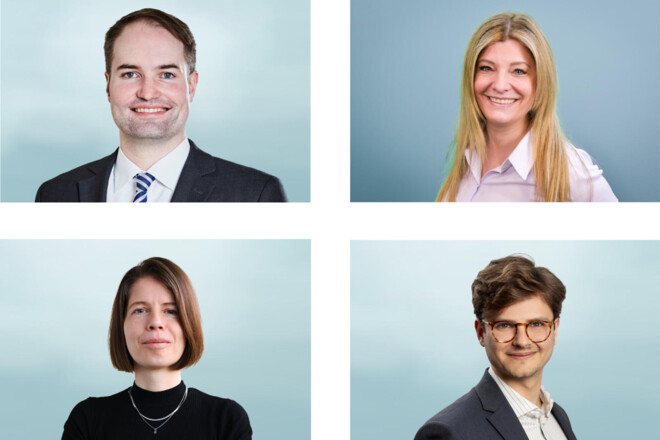More about CO₂
Answers to your questions
You probably have some questions about what transport options we offer. You will find the answers to the most important topics here.
Customer perspective
What form should CO2 transport take in the planned network?
Currently we assume that the CO2 will be transported in liquid form at a pressure of at least 80-90 bar.
How large should the network be?
Basically, the network will be planned in a demand-oriented and future-proof manner. On the one hand, we will take into account the reported needs of the users, as well as the results of studies and especially the results of the national carbon management strategy. Initially, we envisage a north-south connection from Wilhelmshaven to the Swiss border as well as connections to the Netherlands (Rotterdam) and Belgium (Antwerp/Zeebrügge) and a development of the industrial regions in eastern Germany (e.g. Leipzig/Leuna) and Bavaria (e.g. Ingolstadt).
Do you use old natural gas pipelines?
Unfortunately, the existing natural gas pipelines can only be used to a very limited extent due to the technical requirements for (dense) CO2 transport. If possible, however, we will use the corridors of existing infrastructure to keep the necessary interventions as low as possible.
Can I buy and sell CO2 through OGE?
As an infrastructure operator, OGE exclusively markets transport capacities and is not active in commodities in any transport medium. For the commodity sector, OGE has teamed up with strong value chain partners.
Why should I have CO2 transported via pipelines and not through other means of transportation?
Transport infrastructure is needed for transportation to both, storage sites and to ultimate further utilization of CO2. The possible means of transport are truck, rail or ship transport as well as pipeline transportation. Here though, truck and rail transport are practical only for small quantities and short distances, while ships and pipelines are also suitable for larger volumes and greater distances. Pipeline transportation, however, offers a cost advantage for high capacities. Hence, in the long term, pipeline infrastructure has a task to connect particularly the major industrial locations where CO2 occurs as process emissions and those where CO2 is required as a raw material.
Why should I register my CO2 transportation requirements with OGE? Whom can I contact?
OGE operates the biggest gas transmission grid in Germany with around 12,000 km of pipelines. It has many years of experience as an infrastructure operator, as well as excellent know-how in pipeline construction and the transport business. Furthermore, OGE has teamed up with strong partners for CO2 infrastructure operation. Please feel free to contact us with your transport request or register on HyCo-Connect.
I have a demand for CO2. Where does it come from?
OGE works with partners who capture the process-related or energy-related CO2 emissions in line with EU regulations. We transport this CO2 from one of our partners to you.
I would like to have CO2 removed. Where does it go?
OGE works with partners who are responsible for CO2 storage and partners where CO2 is used as a raw material or permanently bound in products. We transport your CO2 to one of our partners, where it will be further processed or stored in line with EU regulations.
Public perspective
What is CO2 transport and why is it relevant?
CO2 transport refers to the transmission of captured carbon dioxide from industrial plants to locations where it is reused (CCU) or permanently stored (CCS). The aim is to reduce unavoidable emissions and make CO2 usable as a raw material.
In what state is CO2 transported?
CO2 is usually transported through pipelines in liquid form at a pressure of 80–90 bar.
What is the Carbon Management Strategy?
The German government's national Carbon management Strategy describes measures for reducing and storing CO2 emissions, particularly in industrial sectors where avoidance is difficult.
Infrastructure & network planning
What kind of infrastructure is needed?
CO2 transport requires special pipelines. Existing natural gas pipelines can only be used to a limited extent.
How large will the CO2 network be?
The idea is to create a needs-based network with north-south pipeline connections (Wilhelmshaven to the Swiss border) and connections to the Netherlands and Belgium, as well as industrial centres in eastern Germany and Bavaria.
When will CO2 transport begin?
The start of CO2 transport will depend on construction progress and network planning. Preparations for the first pipeline sections are already underway.
Construction & impact
What impact will pipeline construction have?
Residents must expect temporary inconveniences such as noise, dust and construction site traffic. All construction activities will be carried out as carefully as possible and with the involvement of regional companies.
How long will construction take?
The construction time depends on the pipeline section in question. Some sections can be built in parallel to speed up implementation.
Technology & safety
How dangerous is CO2 transport?
CO2 transport via pipelines is considered safe. Strict technical standards and safety requirements apply.
What happens in the event of a leak?
Accompanying substances can be harmful to health. Protective measures and emergency plans are therefore in place.
Politics and the public
Is CO2 stored in Germany?
Storage (CCS) is part of the long-term climate strategy. OGE works with partners specialising in storage and utilisation.
Is non-discriminatory network access guaranteed?
Yes, the network is to be open to all eligible users.
Links
Carbon dioxide within German DVGW standards: C 260 (A) specifies the quality of CO2 and CO2 streams, whereas C463 (A) covers the design and construction of CO2 steel pipelines. C466 (A) deals with the operation and maintenance of CO2 steel pipelines. C 491 (A) is available as a technical rule for systems for CO2 Transport. The detailed regulatory framework is available in the member area of the DVGW website or can be bought via the following link: DVGW-Regelwerk Gas/Kohlenstoffdioxid



